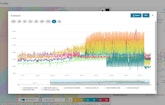
The Albuquerque Bernalillo County Water Utility Authority has adopted a more proactive approach to managing water pressure and eliminating service interruptions.
The Albuquerque Bernalillo County Water Utility Authority is the largest water utility in New Mexico, with a team of 148 employees serving more than half a million people. Crews have always responded to service issues as they were reported, but the utility realized that this...








